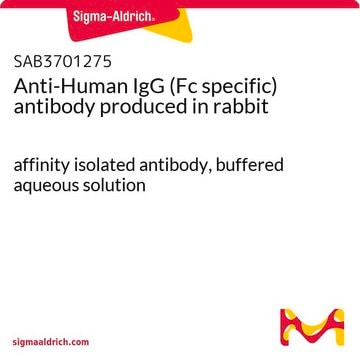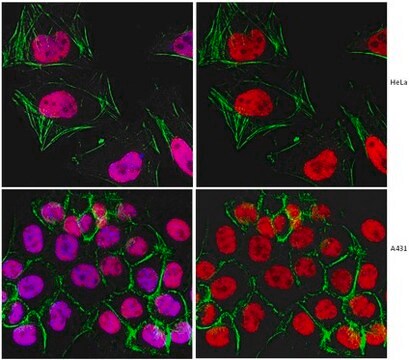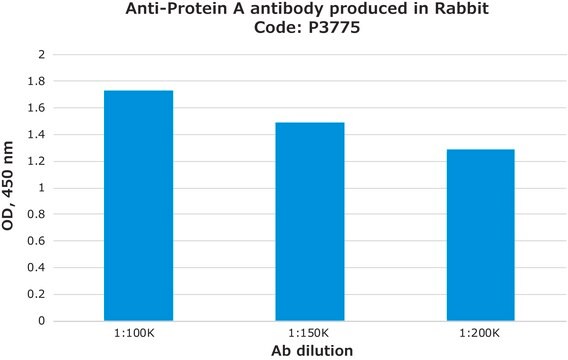The concentration of this antibody is reported on a lot specific basis. The product specification range is 6 - 12 mg/mL. A brief review of the lot history shows a typical range of 8 - 10 mg/mL. Please see the link below to review a sample or lot specific certificate:
https://www.sigmaaldrich.com/product/sigma/p2921#product-documentation
Kluczowe dokumenty
P2921
Monoclonal Anti-Protein A antibody produced in mouse
clone SPA-27, ascites fluid
Synonim(y):
Monoclonal Anti-Protein A
Wybierz wielkość
1055,00 zł
Cena katalogowa2110,00 złZaoszczędź 50%Wybierz wielkość
About This Item
1055,00 zł
Cena katalogowa2110,00 złZaoszczędź 50%Polecane produkty
pochodzenie biologiczne
mouse
Poziom jakości
białko sprzężone
unconjugated
forma przeciwciała
ascites fluid
rodzaj przeciwciała
primary antibodies
klon
SPA-27, monoclonal
zawiera
15 mM sodium azide
metody
immunocytochemistry: suitable
indirect ELISA: 1:20,000
western blot: suitable
izotyp
IgG1
Warunki transportu
dry ice
temp. przechowywania
−20°C
docelowa modyfikacja potranslacyjna
unmodified
Szukasz podobnych produktów? Odwiedź Przewodnik dotyczący porównywania produktów
Opis ogólny
Specyficzność
Immunogen
Zastosowanie
Działania biochem./fizjol.
Postać fizyczna
Oświadczenie o zrzeczeniu się odpowiedzialności
Nie możesz znaleźć właściwego produktu?
Wypróbuj nasz Narzędzie selektora produktów.
Kod klasy składowania
10 - Combustible liquids
Klasa zagrożenia wodnego (WGK)
nwg
Temperatura zapłonu (°F)
Not applicable
Temperatura zapłonu (°C)
Not applicable
Wybierz jedną z najnowszych wersji:
Certyfikaty analizy (CoA)
Nie widzisz odpowiedniej wersji?
Jeśli potrzebujesz konkretnej wersji, możesz wyszukać konkretny certyfikat według numeru partii lub serii.
Masz już ten produkt?
Dokumenty związane z niedawno zakupionymi produktami zostały zamieszczone w Bibliotece dokumentów.
-
I would like to know the concentration (mg/mL) of the anti-proA antibody. Thanks!
1 answer-
Helpful?
-
Active Filters
Nasz zespół naukowców ma doświadczenie we wszystkich obszarach badań, w tym w naukach przyrodniczych, materiałoznawstwie, syntezie chemicznej, chromatografii, analityce i wielu innych dziedzinach.
Skontaktuj się z zespołem ds. pomocy technicznej








